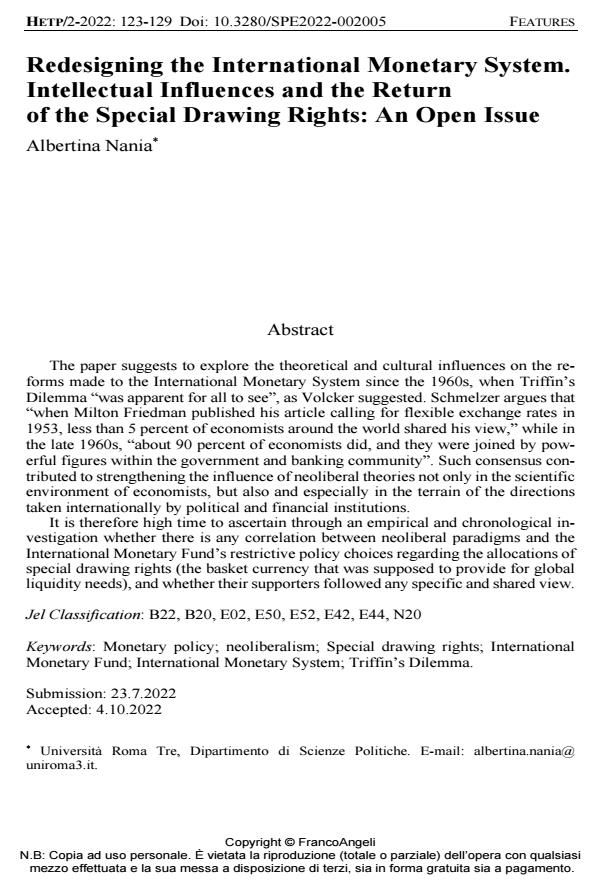Redesigning the International Monetary System. Intellectual Influences and the Return of the Special Drawing Rights: An Open Issue
Journal title HISTORY OF ECONOMIC THOUGHT AND POLICY
Author/s Albertina Nania
Publishing Year 2022 Issue 2022/2
Language English Pages 7 P. 123-129 File size 35 KB
DOI 10.3280/SPE2022-002005
DOI is like a bar code for intellectual property: to have more infomation
click here
Below, you can see the article first page
If you want to buy this article in PDF format, you can do it, following the instructions to buy download credits

FrancoAngeli is member of Publishers International Linking Association, Inc (PILA), a not-for-profit association which run the CrossRef service enabling links to and from online scholarly content.
The paper suggests to explore the theoretical and cultural influences on the re-forms made to the International Monetary System since the 1960s, when Triffin’s Dilemma “was apparent for all to see”, as Volcker suggested. Schmelzer argues that “when Milton Friedman published his article calling for flexible exchange rates in 1953, less than 5 percent of economists around the world shared his view,” while in the late 1960s, “about 90 percent of economists did, and they were joined by powerful figures within the government and banking community”. Such con-sensus contributed to strengthening the influence of neoliberal theories not only in the scientific environment of economists, but also and especially in the terrain of the directions taken internationally by political and financial institutions. It is therefore high time to ascertain through an empirical and chronological investigation whether there is any correlation between neoliberal paradigms and the International Monetary Fund’s restrictive policy choices regarding the allocations of special drawing rights (the basket currency that was supposed to provide for global liquidity needs), and whether their supporters followed any specific and shared view.
Keywords: Monetary policy; neoliberalism; Special drawing rights; International Monetary Fund; International Monetary System; Triffin’s Dilemma
Jel codes: B22, B20, E02, E50, E52, E42, E44, N20
Albertina Nania, Redesigning the International Monetary System. Intellectual Influences and the Return of the Special Drawing Rights: An Open Issue in "HISTORY OF ECONOMIC THOUGHT AND POLICY" 2/2022, pp 123-129, DOI: 10.3280/SPE2022-002005